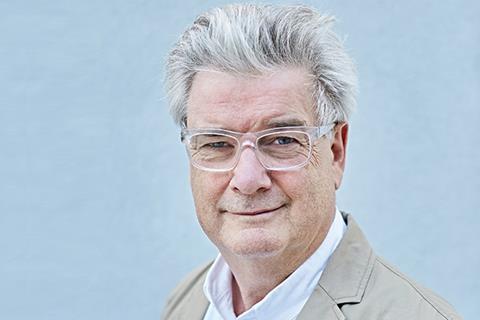We have an opportunity to stand with our Ukrainian counterparts and to offer collective support, writes Ben Derbyshire

Chris Williamson of Weston Williamson is an irrepressibly public-spirited professional. I worked with him as international vice-president during my term as president of RIBA.
It is characteristic of him to suggest that we should organise to support Ukrainian architecture students. BD ran a piece on that suggestion this week which caught my eye.
>> Also read: Weston Williamson snapped up by engineering giant
I was reminded that, 85 years ago, the RIBA, among many other organisations, was involved in efforts to resettle displaced émigrés. Here is the story:
The original RIBA bureau was an idea born at the farewell dinner for Walter Gropius on 9 March, 1937. The dinner was an extraordinary affair with guests including Serge Chermayeff, Wells Coates, Geoffrey Faber, Maxwell Fry, Siegfried Giedion, Henry Moore, HG Wells, Christopher Nicholson, Nikolaus Pevsner, Philip Morton Shand, and László Moholy-Nagy who designed the programme. Those were the days!
Of course the circumstance then were different, but there are parallels. In the 1930s, the Modern Architectural Research (MARS) group was tirelessly proselytising the virtues of modernism, acting as a support structure for architects isolated in a conservative Britain.
As the economic and political landscape in mainland Europe became more unstable, Britain became home to many refugee architects, artists, designers and academics. They fled Nazi Germany after 1933, Czechoslovakia after the German occupation, Austria after the Anschluss in 1938 and Spain after the fall of the Republic. In Britain, MARS became a spiritual home for a number of leading modernists.
Bauhaus founder Walter Gropius was among the many émigrés to arrive here back then. He worked for a while in the practice of Max Fry and Jane Drew before heading west to found the Architects Collaborative.
Peter Murray and I held a commemorative dinner at the Athenaeum (The RIBA would not do it) in 2019, replicating the 1937 menu and with a facsimile of the Moholy-Nagy programme. Adie Gale (who of course worked for Mies van der Rohe on his design for Mansion House Square) wrote to us after the dinner to say that his generation felt that Gropius had been corrupted in some way by the United States, falling foul of market interests.
These cultural connections are significant and reflect the global position of British architecture with its long tradition of welcoming overseas talent. Simon Allford is calling for a 21st-century virtual and physical “Institute of Ideas”. I’m with him on that.
The powerful cultural connections that tie Adie Gale to the 1930s MARS group and to the salvation of refugees from Europe define a role for the RIBA that has real substance. As Nadine Dorries has said, “culture is the third front”. She is right about that, and Simon’s Institute of Ideas has a central role to play.
So I, too, have written to Simon Allford suggesting that the time has come to do something. At HTA Design we have vacancies in a range of disciplines.
Like Weston Williamson, on our own we cannot contribute much. But as a profession we have an opportunity to stand with our Ukrainian counterparts and to offer collective support. Now, as in the 1930s, an infusion of eastern European culture will be nothing if not enriching.
















No comments yet